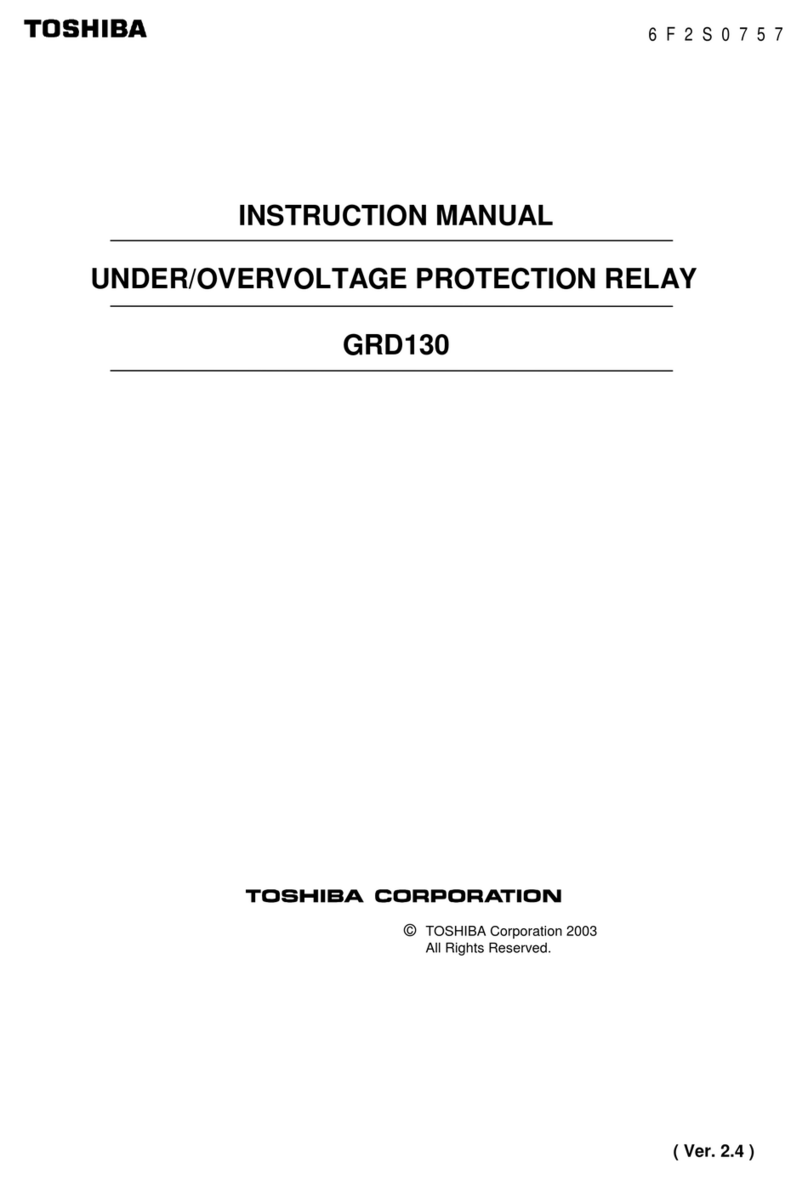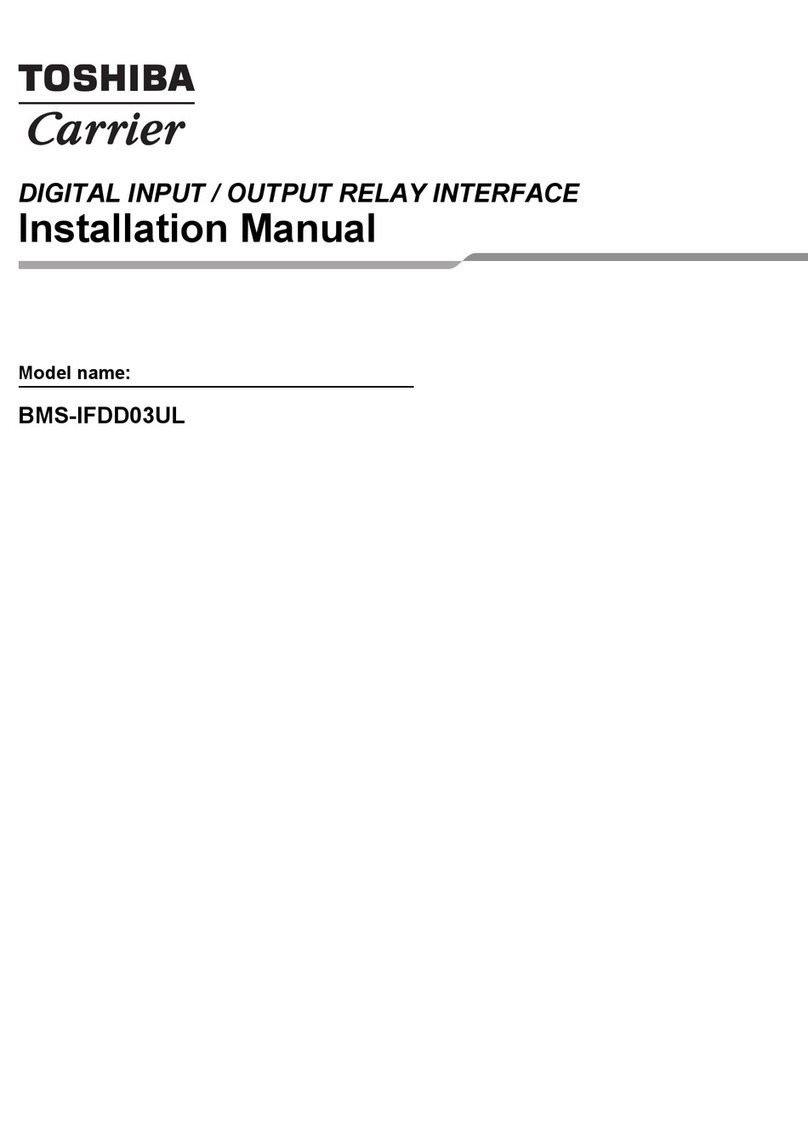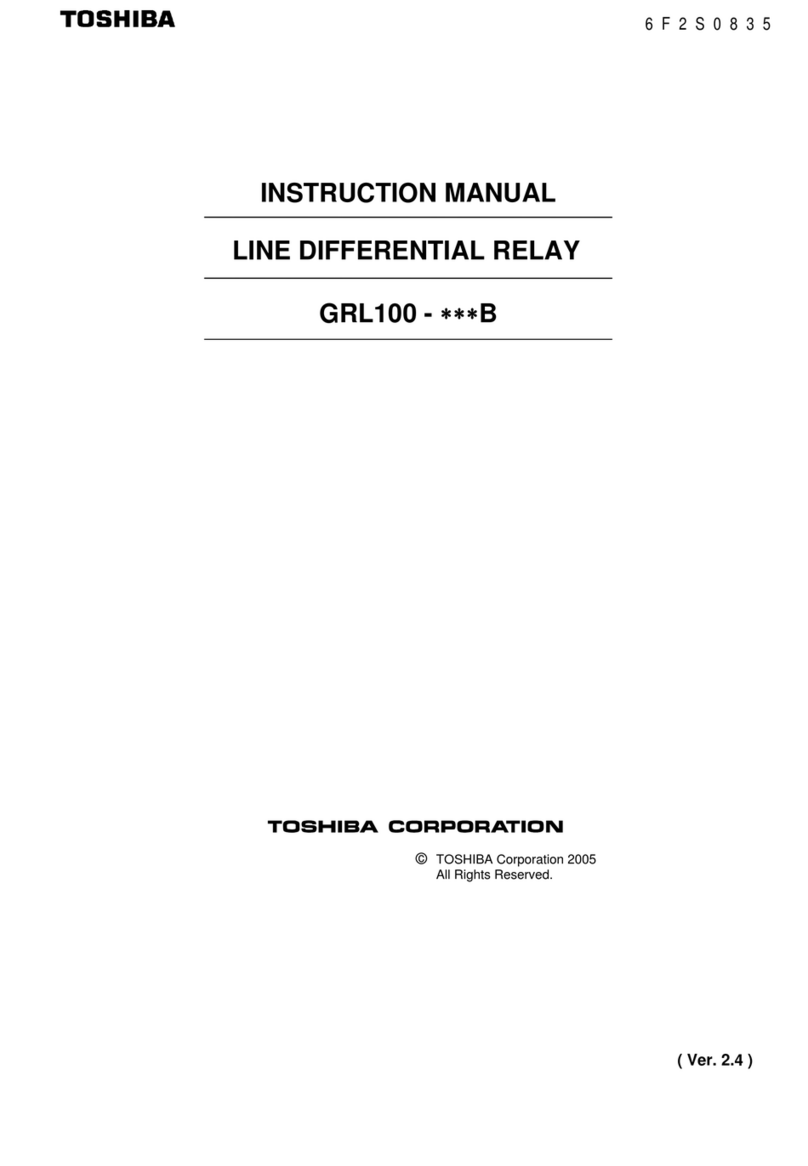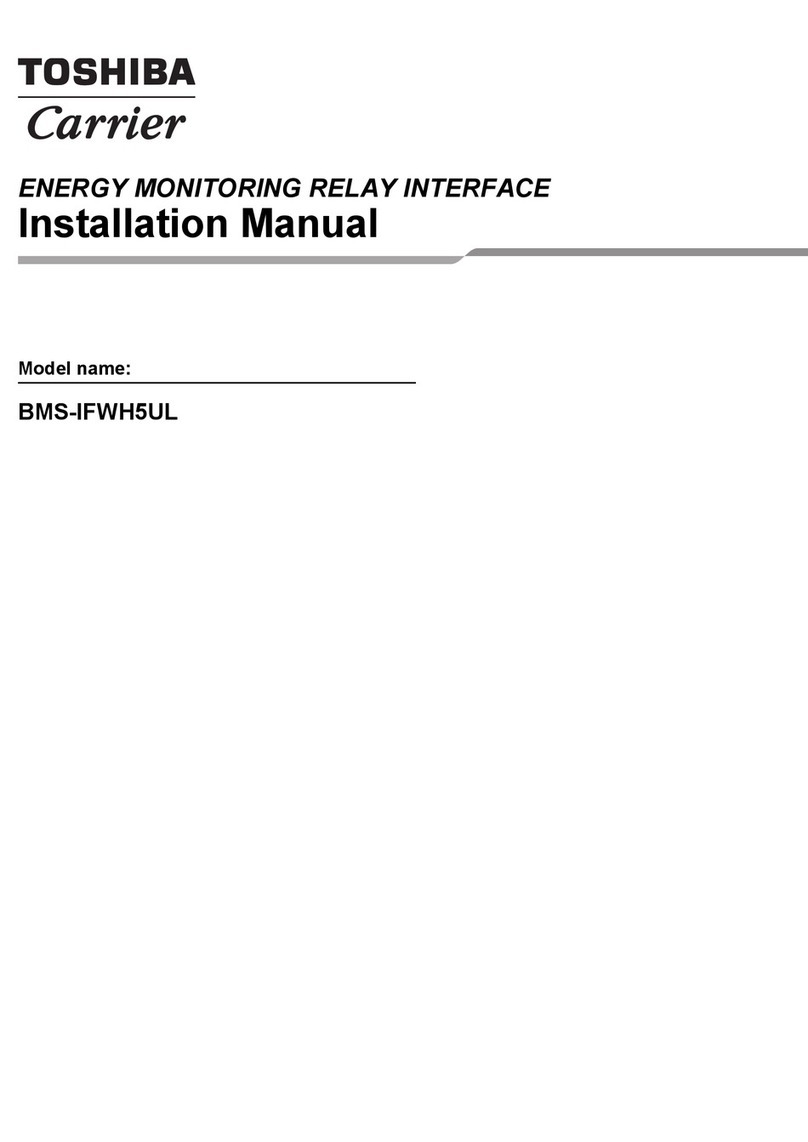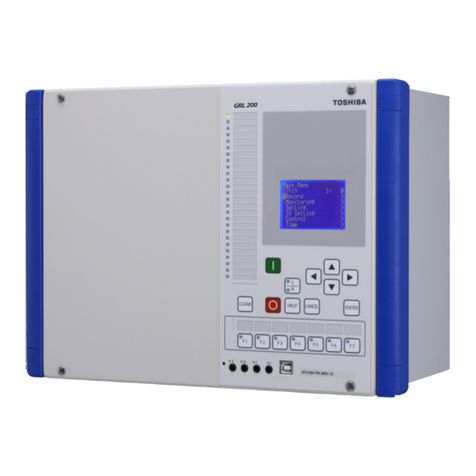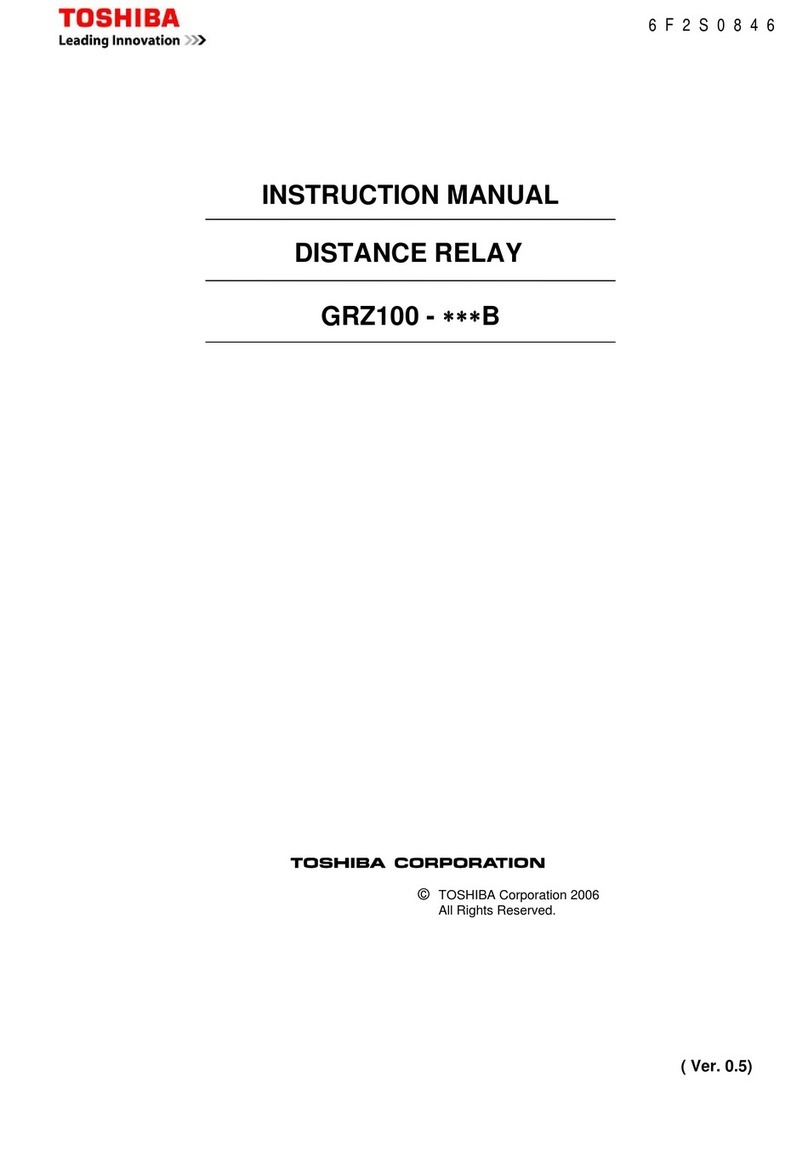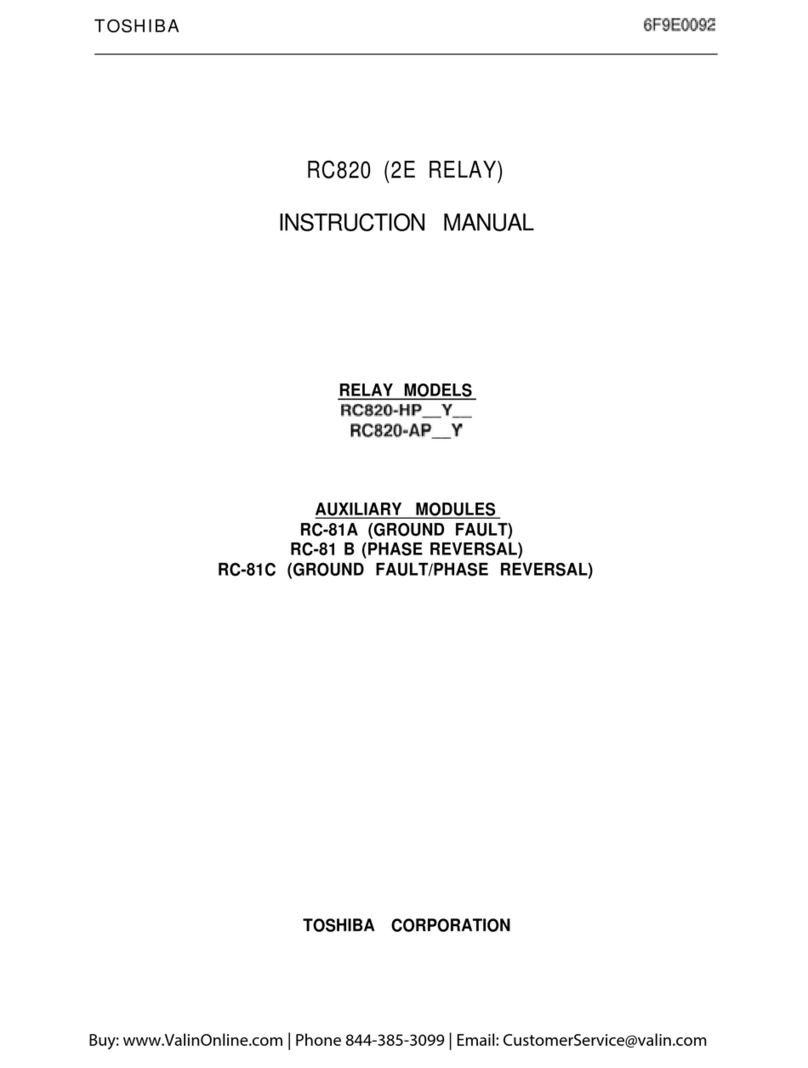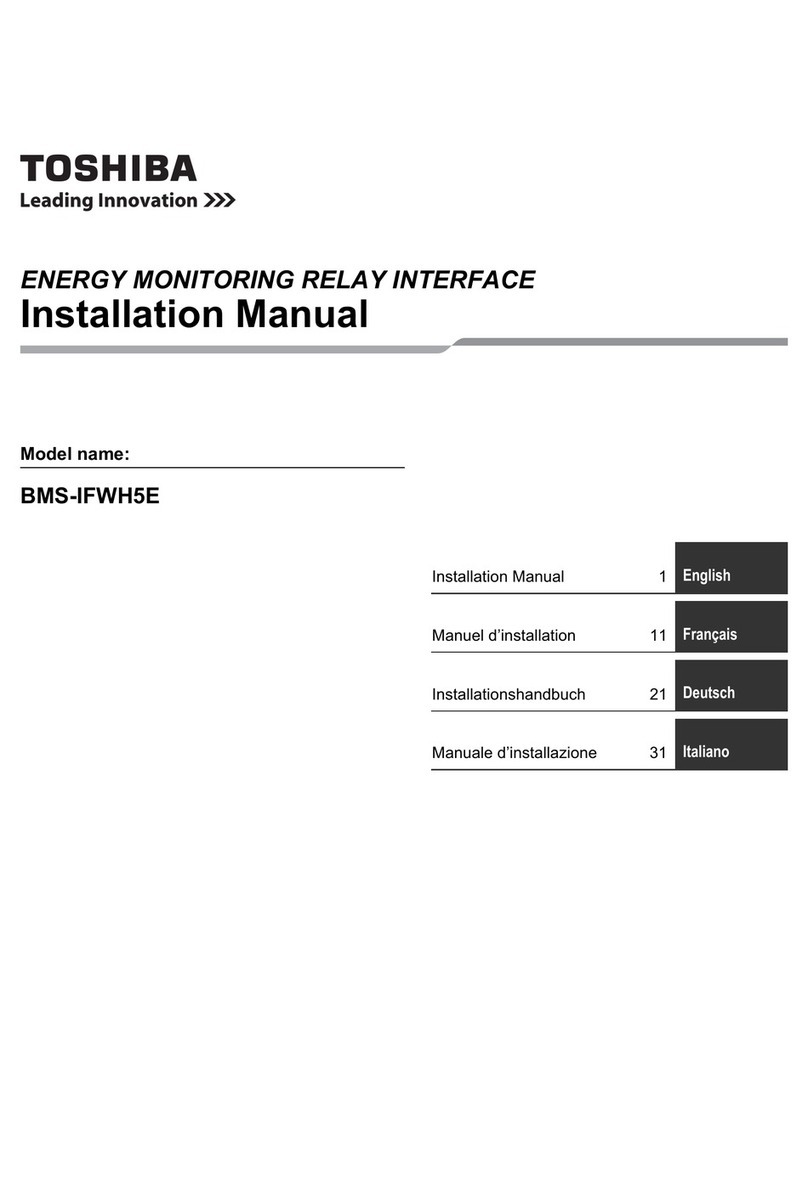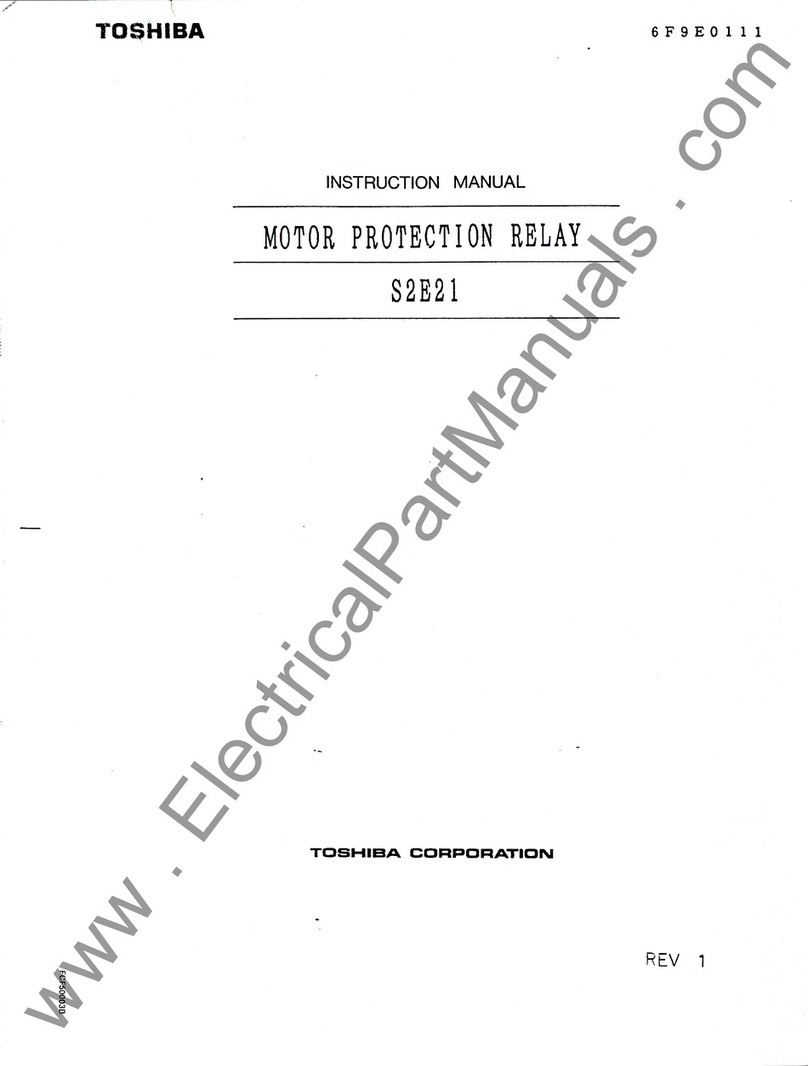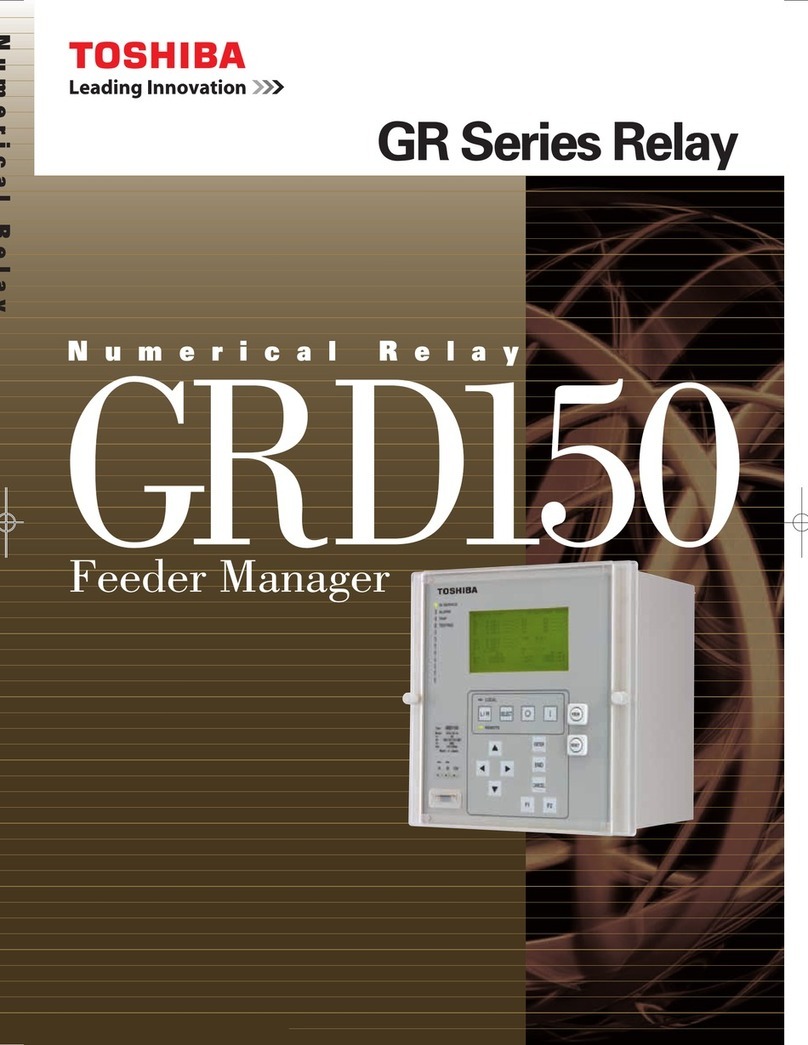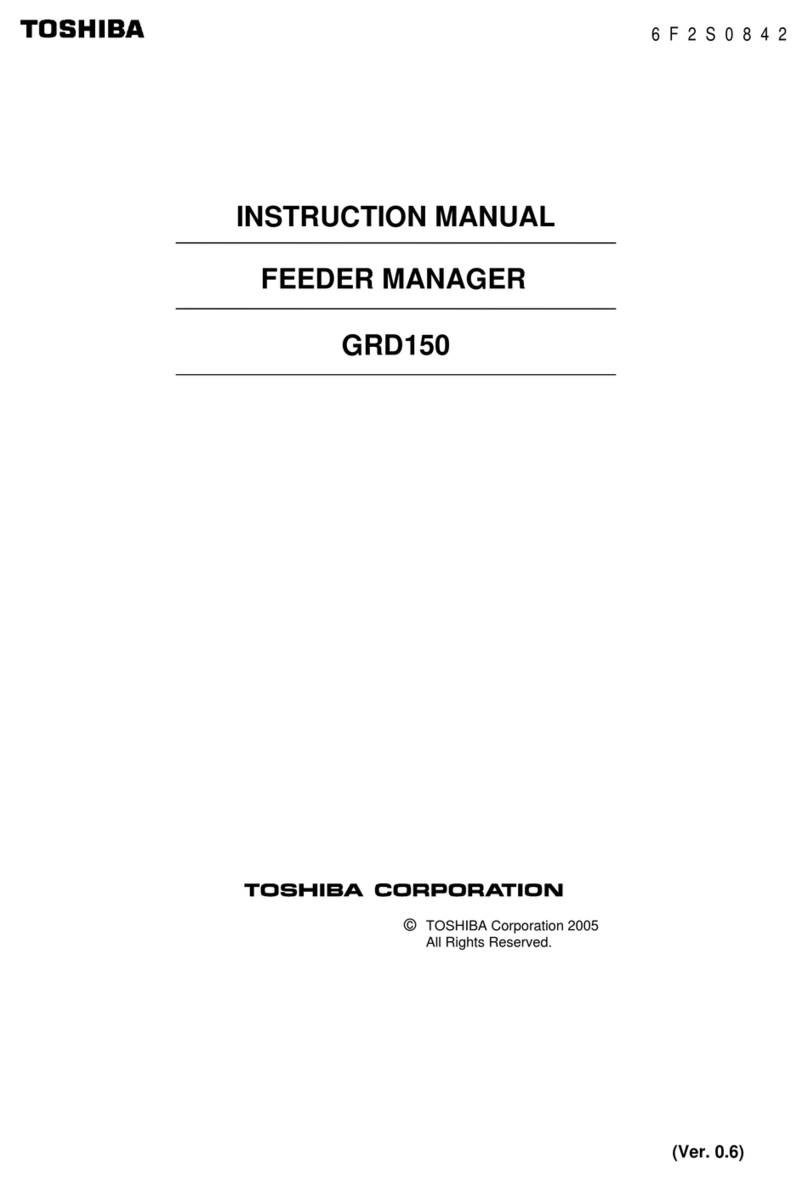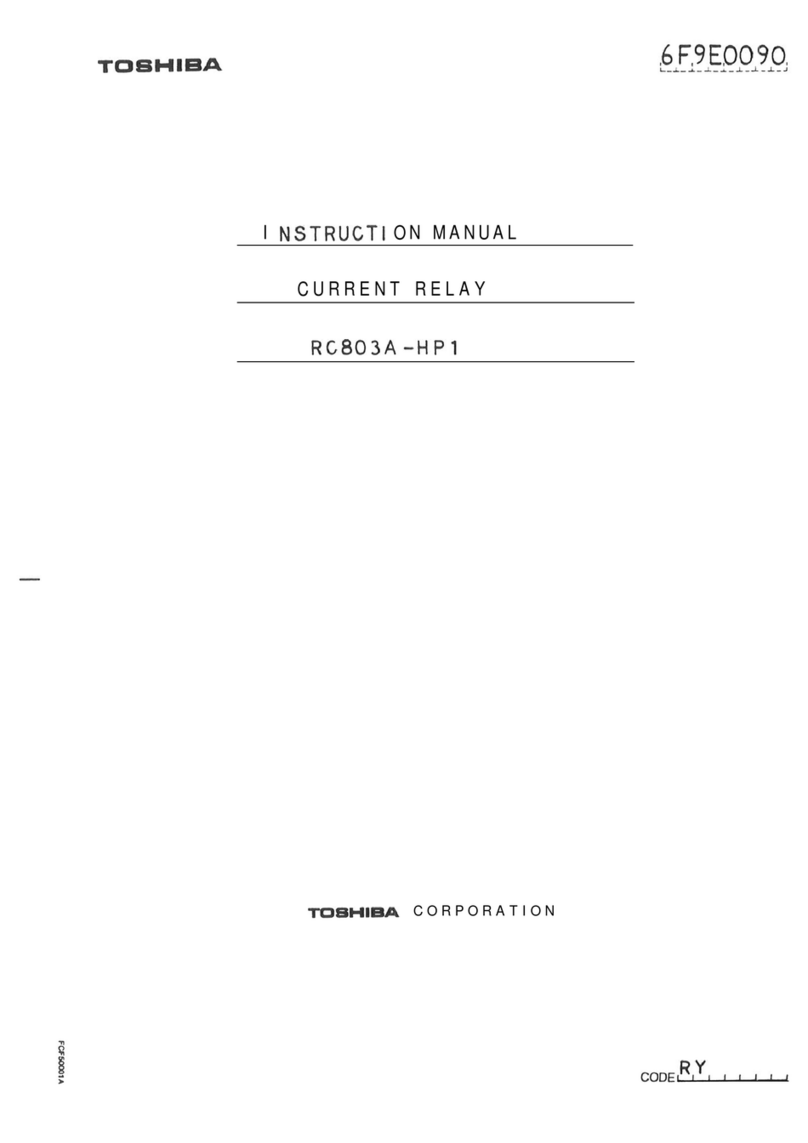GRZ100
2
FEATURES
Fully numerical distance protection relay
High speed operation typically 20ms
Time-stepped distance protection with four forward
zones, two reverse zones, and one non-directional
zone
Zone 1 extension protection
Command protection distance schemes (PUP, POP,
BOP and UOP with week infeed and current reversal
logic)
Command protection DEF schemes (POP, BOP and
UOP)
Single- and/or three-phase trip
High-resistance earth fault protection
Overcurrent backup protection
Thermal overload protection
Overvoltage and undervoltage protection
Switch-on-to-fault (SOTF) and stub protection
Broken conductor detection
Breaker failure protection
Out-of-step trip protection
Power swing blocking
VT failure detection
Single-shot (single/three/single+three phase) or
multi-shot (three phase) autoreclose
Fault location
Configurable binary inputs and outputs
Programmable logic for I/O configuration, alarms,
indications, recording, etc.
Automatic supervision
Metering and recording functions
Menu-driven user interfaces
Front-mounted RS232C port for communication to a
local PC and rear-mounted RS485, Fibre optic or
Ethernet LAN serial ports for communication to a
remote PC
IRIG-B port for external clock
The IEC60870-5-103 protocol is provided for
communication with substation control and
automation systems.
GRZ100 can be provided with integral digital communi-
cation channels for teleprotection signalling. Either one or
two communication channels are provided, suitable for
relay-to-relay connection via fibre-optic links, or via
electrical interfaces to a digital communication network.
GRZ100 can be configured using the integral communi-
cation channels to support the following functions:
Phase-segregated command protection distance
schemes (PUP, POP, BOP and UOP with week
infeed and current reversal logic).
Phase-segregated command protection DEF
schemes (POP, BOP and UOP).
Command protection signalling for tripping during a
power swing.
Command protection for 2- or 3-terminal applications.
Phase-segregated transfer trip (intertripping).
Transmission of binary signals for user-configurable
applications.
Transmission of measured values to be displayed at
the remote terminals.
Synchronisation of the clocks at the various terminals.
Enhanced fault-location accuracy by use of remote- end
data in the case of 3-terminal applications.
Continuous monitoring of the communication channels,
with capability to provide dual-redundant channels in
the case of a 2-ended system, and automatic
re-routing of signals in the event of a communi-
cation channel failure in a 3-ended system.
APPLICATION
GRZ100 is a full-scheme high-speed numerical distance
relay for application to transmission lines in solidly earthed
networks.
GRZ100 provides the following protection schemes.
Time-stepped distance protection
Zone 1 extension protection
Command protection (distance protection using
telecommunication)
Overcurrent protection for SOTF and stub fault
Out-of-step trip protection
Breaker failure protection
As a backup protection for high-resistance earth faults,
GRZ100 provides the following four functions.
Directional earth fault protection
Directional earth fault protection using
telecommunication
Directional or non-directional inverse time overcurrent
and earth fault protection
Definite time overcurrent and earth fault protection
GRZ100 can initiate high-speed single-shot autoreclose or
multi-shot autoreclose.
GRZ100 provides the following metering and recording
functions.
Metering
Fault recording
Event recording
Disturbance recording
GRZ100 provides the following user interfaces for relay
setting or viewing of stored data.
Relay front panel; LCD, LED display and operation keys
Local PC
Remote PC

